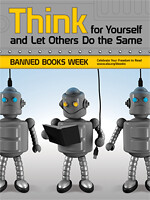David Liss
With twists and turns of real or imagined conspiracy to rival a Thomas Pynchon novel and with meticulously researched historical detail, David Liss' second novel, set in Amsterdam in 1659. It involves one Miguel Lienzo, a Portuguese Jew who trades at the new Amsterdam Exchange, the worlds first commodities futures market. Presumably, the young Lienzo is the same person as Benjamin Weaver's uncle Miguel who appears as an elderly man in early 18th century London in Liss' first novel, A Conspiracy of Paper.
Readers who come to The Coffee Trader after reading that first novel may view it as a kind of prequil, although one could read them in chronological order (Coffee Trader first) or in the order in which they were written with no harm done. Much more is learned about the Portuguese Jews in exile during that historical era and the full dimensions of the split between Miguel and David Lienzo, hinted at in A Conspiracy of Paper are brought to light.
It is very hard to write about a book that is so plot driven and so dependent on surprising twists and turns in it's plot without spoiling things for future readers, but I am trying. Without revealing too much then: Miguel Lienzo has gotten himself into debt through some trades on borrowed money, that went bad on him. He is introduced to coffee, a new commodity brought to Europe from the east recently and is convinced he can repair his fortunes by making a masterful trade in coffee, which will soon be for sale on every street corner in a chain of Starbucks shops. (not really) The ramifications of trading in the future price of a commodity and the scheming that goes on behind the scenes by rival traders, a cute Dutch serving girl, and the complications of life for a Jew exiled in a foreign land lead to a lot of unexpected adventures.
Liss has written five, or is it six, or perhaps even seven novels and, surprise! a slew of comic books for Marvel comics. Most of the novels appear to be historical fiction, including one about the whiskey rebellion. I may become somewhat of a boor while read and review all the David Liss writing I can get my paws on.
With twists and turns of real or imagined conspiracy to rival a Thomas Pynchon novel and with meticulously researched historical detail, David Liss' second novel, set in Amsterdam in 1659. It involves one Miguel Lienzo, a Portuguese Jew who trades at the new Amsterdam Exchange, the worlds first commodities futures market. Presumably, the young Lienzo is the same person as Benjamin Weaver's uncle Miguel who appears as an elderly man in early 18th century London in Liss' first novel, A Conspiracy of Paper.
Readers who come to The Coffee Trader after reading that first novel may view it as a kind of prequil, although one could read them in chronological order (Coffee Trader first) or in the order in which they were written with no harm done. Much more is learned about the Portuguese Jews in exile during that historical era and the full dimensions of the split between Miguel and David Lienzo, hinted at in A Conspiracy of Paper are brought to light.
It is very hard to write about a book that is so plot driven and so dependent on surprising twists and turns in it's plot without spoiling things for future readers, but I am trying. Without revealing too much then: Miguel Lienzo has gotten himself into debt through some trades on borrowed money, that went bad on him. He is introduced to coffee, a new commodity brought to Europe from the east recently and is convinced he can repair his fortunes by making a masterful trade in coffee, which will soon be for sale on every street corner in a chain of Starbucks shops. (not really) The ramifications of trading in the future price of a commodity and the scheming that goes on behind the scenes by rival traders, a cute Dutch serving girl, and the complications of life for a Jew exiled in a foreign land lead to a lot of unexpected adventures.
Liss has written five, or is it six, or perhaps even seven novels and, surprise! a slew of comic books for Marvel comics. Most of the novels appear to be historical fiction, including one about the whiskey rebellion. I may become somewhat of a boor while read and review all the David Liss writing I can get my paws on.
This post is in the 82nd

Published at Mel's Mouthful on Mothering.









